Links are the currency of the web. They’re so important that Google uses them to gauge the usefulness of a particular blog page and where it should rank in their search engine results pages (SERPs).
However, not all links are created equal. Some links will increase your traffic, while others can actually reduce it. This is why solid link building strategies is imperative.
The truth is that five quality links from authority sites will weigh more heavily in your favor than ten mediocre links from generic sites. That’s because the anchor text and external link to a particular web page is part of Google’s ranking algorithm.
When you build link profile components, natural links and reciprocal links from high quality websites are favored by Google. Any way you look at it, link building is complicated. Overstuffing links is considered black hat and will be penalized by the search engine.
To avoid wasting time on link building, you have to develop a strategy: an effective plan that puts you at the top, attracts the right high-quality links to you, and sustains your search rankings, no matter what the next Google algorithm update changes may be.
Most people seeking to build links never actually develop solid link building strategies to rise in ranks. The risk of a penalty for links to your web pages is greater if you lack a proven strategy.
One effective link-building strategy that’s generated over 2,000,000 visitors and more than 41,000 quality incoming links to our blogs is infographic marketing: creating and promoting useful content through infographics.
This significant result shows that effective content marketing strategies ultimately generate more authority links for you. Both content marketing and link building are like a magician’s interconnected steel rings that can’t be separated.
There are a few simple SEO best practices that you can follow to get the best links, such as a natural link – the kind that significantly improves your search rankings.
Remember that these twelve tactics may not get you tons of links overnight. But, getting links will be a given, if they’re implemented and pursued consistently you’ll be happy you implemented anyone link building technique.
1. Do the Research: Understand DA and PA
If you’re ready to build links from a particular site, it’s important to understand domain authority and page authority. Domain authority is a metric that was developed by Moz. It’s based on a 100-point scale.
Essentially, the higher the DA score of any site or page, the more link juice and value Google will pass to the inbound links coming from that site or page. Using higher scoring sites is a building technique to build high-quality links.
As a matter of fact, the power of any website lies in the DA and PA. PageRank is no longer an effective metric; it fizzled out a long time ago. So, instead of building inbound links from a PR6 blog with less than a 20 DA score, focus on getting relevant links from PR 3 – 4 blogs with a DA above 30.
To find out the domain authority of any site, simply download the MozBar Addon. Activate it, load the site in question and you’re done:
After you’ve activated MozBar, go to Google and search for your main keywords, to determine the quality of search results in your industry. These are the same sites from which you’ll eventually get inbound or reciprocal links.
To find out the DA and PA of your competitors’ domains, simply visit their homepage and toggle the MozBar icon that’s in the top right corner of your browser window:
2. Track People Mentioning Your Brand and Site
A simple building technique that you can use to build effective links to your site is to track people who mention your name or URL across social media.
You’ll need those to start building a relationship with the blogger. The goal is to eventually get a reciprocal link.
And, since they already mentioned you willingly, getting a relevant link from them, either through guest blogging, expert roundup posts, interviews or content collaboration, will probably be a lot easier.
Don’t underestimate the power of a guest post in your link building strategies. Social media success relies on the ability to link profile authorities to you. This is focusing on white hat link building, not black hat. It takes time.
3. Create Ego Bait
Content that boosts people’s egos compels those people to link out to it. This is a highly effective strategy that can produce impressive results, especially when you understand the trust pyramid and use it as part of your content strategy.
Here’s how it works:
First, you create content that makes your readers recognize their challenges and creates awareness that you understand their problem. Use your blog post or infographic to broaden your readers’ understanding of that topic.
Often, people link to a post they connect with on a personal level – they want other people in their network to benefit from it, too.
Then, show examples or case studies of how your strategy works and who it has helped. This prompts the reader to believe, like and trust you. Once that is done, call them to action – ask your readers to share the post with others on social media, if they’ve benefited from your advice. Invite others to guest post on your behalf.
This four-phase trust process is also sometimes formulated as “AIDA.”
Out of all of the major link building strategies that marketers can use, I’ve found creating “ego bait” to be one of the easiest and simplest. You don’t have to go to extensive lengths to attract attention and get others to give you a reciprocal link.
Creating ego bait content is useful, not only for building links but also for promoting your blog posts on social media.
An example of an “ego bait” blog post is the expert roundup post, written by Richard Marriott, in which he interviewed 53 experts about their favorite blog promotion tools. The post did very well, generating over 130 comments, many from the contributing experts.
The roundup post also generated over 200 unique links from 46 root domains. This is not bad at all.
The same page has also generated over 1,000 social shares in less than six months. Here’s the data from Buzzsumo:
4. Build Relationships With Editors
Editors and media sites can rapidly expand your reach. Building relationships with the media gives you the rare privilege of syndicating your content across several authority sites, benefitting from natural link authorities.
According to Brick Street, content shared on two or three channels enjoys an increase in engagement of 24%.
But, before you can effectively deploy a successful media outreach plan, you have to understand who you’re marketing to. Do you really know your customers and what stage of the purchasing cycle they’re in?
If your blog post is highly useful, magazine editors and media sites, such as CNN, FoxNews, and HuffPost may decide to republish it. But, it’s easier to get that to happen when you have a close relationship with the editors.
You can also connect with reporters through HARO, which makes the job of connecting with editors much easier.
5. Use LSI Anchor Texts
I’ve written about LSI on several occasions. LSI is an acronym for Latent Semantic Indexing. It’s a simple mathematical theory that Google uses to gauge the relevance of a page to the inbound link and its anchor text.
Basically, LSI is all about synonyms. You and I know that mentioning your main keyword several times on a given page may result in over-optimization. That shouldn’t be your intention.
To avoid getting penalized, incorporate LSI into your strategy.
Here’s how it works: If you’re writing about Microsoft Windows, Google expects that you will probably mention Bill Gates. Or, take the word “apple” – what particular Apple (or apple) are you referring to? And, how does the search engine know?
Is it the company itself or one of its products – the Apple iPad, iPhone, iMac – or is it the fruit? To help Google understand what your web page is about, use synonymous words and phrases.
For example, let’s assume that your keyword is “increase search traffic.” In order to avoid stuffing keywords, both in your article and the anchor texts, use words and synonyms that are related to that keyword:
- Increase search traffic
- improve organic visitors
- generate more search visitors
- get website traffic
- drive search engine visitors
If you create content that users find helpful, while still targeting the synonymous words, you’ll find your page ranking for several long-tail keywords that you didn’t even actively target.
Use LSI keywords to diversify your anchor texts and keep your page from getting penalized. Remember what the Google Hummingbird update is about: creating a great user experience, which in turn leads to natural, organic links.
6. Understand Google’s Quality Criteria
What does it really take to escape Google’s penalty radar and sustain your search engine rankings and traffic? Well, it takes an understanding of Google’s quality criteria. In other words, you have to know how the algorithm works and what Google sees as quality content.
Through it’s a sophisticated algorithm, Google can index over 100 million gigabytes of information and serve those pages of information to their search users.
Google is basically a search engine and digital advertising company that allows users to get the best answers to their questions, by simply typing in a string of words.
Google spiders are high-end programs that crawl web pages. As they do, they find links on those pages – both internal links and those pointing to external sites. These fresh web pages are then added to the database, known as the “index.”
Google is desperately looking for fresh content that people love – content that catches people’s attention and keeps them reading and sharing – because that’s what their users want.
In the eyes of Google, bad content doesn’t necessarily mean content that doesn’t contain useful information, because there can be lapses in Google’s algorithm. And, whether content is “good” or not is a subjective judgment call.
Compelling content is what Google wants. They want blog posts, videos, podcasts, PDF reports, white papers, articles, press releases and every other type of content that compels or persuades people to spend time reading and sharing with others.
So, understand that Google’s quality criteria is centered on/around users. Google didn’t invent the term “user experience.” It’s a reflection of the deep-rooted desire of every human being to get exactly what they’re searching for.
And yes, as an internet entrepreneur, you can help others with your data-driven content that solves their problems or helps them achieve a higher level of success.
For example, people want to find the right partner, when it comes to romantic relationships, including marriage. In business, you want your partner to understand you and deliver outstanding results at the right time.
If you want to build a blog that consistently generates search traffic, you have to work hard to keep your readers and users engaged.
Since 2007, I’ve been creating and giving away high-quality content that I could have packaged as an online course costing $99 or $199. I chose not to, for one reason: to build a strong level of engagement with my blog and become an authority in the process.
As a result of giving away high-quality content over the years, QuickSprout now receives well over 700,000 visitors per month.
I don’t know precisely how many leads I’ve funneled into my consulting business over the past 12 months – but blogging is a true lead driver and works best when you focus on the user.
Of course, there are over 200 Google ranking factors that determine the position of every web page in Google’s SERPs. Still, they’re all pointing to one thing: user experience.
Google is only filling a human need. This is equally important in your business. When you create content, build links or communicate with people, seek out the best ways to make them happy.
That’s what the Google search algorithm is all about. There is no real secret to improving your rankings. There’s no need to resort to manipulative SEO practices that will cripple your efforts.
So, it really doesn’t matter whether it’s Google Panda, Google Penguin or the revolutionary “Google Hummingbird,” the purpose is always the same.
Here are the highlights:
Google Panda: The first Panda was released in February 2011. Subsequent Panda updates have endeavored to make sure useful content gets rewarded. Your responsibility as a content writer is to create useful and in-depth content that helps people.
This type of content will increase your search traffic, rankings, and revenue, because you’ll get more clicks and convert more visitors into customers with your blog.
The effort that you put into your content today will produce staggering social, referral and search traffic, in the future. So, don’t give up when you don’t see overnight results.
Don’t let users waste their time looking for answers on the web when you’ve got the answers they need. In a nutshell, avoid low-quality content.
Steer clear of thin content (300 – 500 words), too. Instead, focus on writing 2000+ word articles and blog posts on a regular basis, because a recent study shows that content length significantly affects ranking.
And, it’s better to not target specific keywords at all, than to stuff your keywords into your content.
Google Penguin: This was the second most significant algorithm update prior to Hummingbird. The primary focus was on the quality of links that you gain (naturally).
Yes, Google is still about gaining links. Google doesn’t want you to buy links or trade links with other blogs. It wants you to earn them.
Sure, I still seek link building opportunities. But, they have to be tailored to meet this goal and eventually help me gain links naturally, instead of paying for them or doing unscrupulous things.
Again, it’s about the users. Content, pages, topics, and links should primarily be for the users, not the search engines. Ask yourself: Would you add a specific link, if search engines didn’t exist? Hidden links or texts, link schemes, and over-optimizing your anchor texts will get you into trouble.
On the other hand, the links pointing to your internal pages should also be useful and natural.
According to Matt Cutts, the purpose of SEO is not to make links and anchor text look natural, because you can’t successfully do that. Instead, write from your heart and focus on helping users find a better answer. That way, everything naturally falls into place.
I’ve found this to be true, especially with this blog. I don’t obey any anchor text rule (even though I try to diversify my approach). I don’t select anchor texts or web pages to link to prior to writing my post. I just do it naturally and it’s working. You may want to follow my strategy, too.
Google Hummingbird: Hummingbird wasn’t just an update or tweak – it was a complete change in Google’s algorithm.
The strategy that was trending in 2013 is no longer effective in 2019. See what SEO used to be, versus what it is now:
To the majority of site owners and writers, SEO was all about sprinkling profitable keywords onto the screen, then wrapping articles around them. They never considered the person on the other side who has a problem and desperately needs a solution.
The best SEO practice today is centered on what Hummingbird brought to the web: conversational search.
You’ll notice that search results are not relevant, useful or in-depth. Google usually pulls data from their resource – the Knowledge Graph – coupled with relevant social signals, to understand the meaning of words and phrases as they’re typed into the search box.
Today, users find exactly what they’re looking for and Google is glad because they’ll continue to attract advertisers and make more money.
7. Focus on Link Relevance
If you want to get more value – traffic, rankings and brand recognition – from the search engines, focus on quality, relevant links.
Organic rankings may take time to materialize. But, you’ll soon discover that it’s more profitable than paid search in the long run.
Getting relevant inbound links to your site isn’t as difficult as most people believe. On the Google Webmasters blog, there are simple, effective tips to help you develop a link building strategy that works.
Links that first provide value to the user will always produce significant search results.
In fact, when you start to teach others new things, show your expertise, interview influential personalities in your industry and make your site worthwhile, you’ll naturally get relevant links. That’s because lots of people from your target market will share, mention and recommend your content to others.
To get these merit-based inbound links, you’ve got to know your target audience and only write content that’s relevant to them. Such content must be laser-focused on a group of people before it can resonate with them. If you do your job well, users will find the content helpful and recommend it to others, the same way consumers recommend the best restaurants to their friends, without any reward.
It’s important to note that the books that top the bestseller list aren’t there because they’re the best books. It’s more about being available at the right time. Authors write books. Readers make those books bestsellers. Artists release songs, but listeners make them popular.
In the same vein, customer reviews and social shares are the easiest and safest methods for building relevant links.
If you’re using guest blogging to build quality links, you should focus on relevant blogs in your niche. For example, I contribute regularly to Search Engine Journal. When I link to my blog, I make sure that the page I link to is relevant to the topic in some way.
For example, in a recent guest post that I did for SEJ, where I talked about growing organic traffic without generating more content, I actually linked to a web page on QuickSprout about how content length affects ranking.
If you observe closely, you’ll find that I didn’t optimize the anchor text. Google could see this as a spammy technique and penalize me (maybe not today, but in the future).
The goal is to let that anchor text flow with your content and not look spammy, over-optimized for target keywords or too short (unless you’re linking to the brand URL – e.g., Quicksprout.com).
Make sure that your anchor text contains four to eight words. This looks more natural. Shaun Anderson and other renowned SEO consultants agree with this.
Remember that relevant links are primarily measured by the anchor text. If the anchor text is natural and contains more branded keywords and URLs, you’ll see improved search performance.
When the anchor text isn’t over-optimized for the target keywords, Google perceives such links as editorial, because editors, bloggers and site owners don’t know your main keyword. Instead, they’ll use what seems right and relevant to them.
8. Get Some Nofollow Link Juice
Nofollow links may be the hidden gem in your SEO adventure. As Nicole Kohler puts it, “success on the internet boils down to you being at the right place with the right content at the right time.”
So, whether you get do-follow links or they’re entirely nofollow, take heart: one nofollow link from the right blog/web page could still result in hundreds of dofollow links from other authority sites that have enormous social influence, lots of indexed pages and recognized brands.
For example, I’d rather have nofollow links from sites, such as BusinessWeek, Moz, Forbes, BBC, than dofollow links from blogs that have no real online traction.
To help you fully understand nofollow links and how Google sees them, here’s what Matt Cutts had to say on the Google Webmasters Blog:
In order to stay off Google’s penalty radar, deliberately build some nofollow link juice. This is where most bloggers and content marketers make a mistake. They focus on dofollow links because they’ve been taught by experts that nofollow links have no value.
Well, to a large extent, that’s correct. Nofollow links will not improve your search rankings in any way. But, they do affect your rankings indirectly. How?
When nofollow links are clicked and users find the referred web page useful, they’ll stick around to read the content, read reviews about the product, as well as share the link. This is a good ecommerce SEO best practice.
Google recommends that you add the nofollow tag (rel= “nofollow”) to links intended to manipulate pagerank or site performance. Those metrics should happen naturally, according to Google’s algorithm and not through any brute force or blackhat SEO strategy.
As I said earlier, nofollow links can send 206% more traffic to your blog, if they appear on a high-end authority site with lots of monthly visitors.
And, when your links are clicked often (whether they’re nofollow or dofollow), Google will perceive such links as useful and reward the web page in their own way. Of course, it may not lead to instant results, but effective SEO is a long-term game.
9. Drive Traffic to Your Links
First and foremost, your links must be attractive, contain the right anchor text and add more value to the reader. Buffer was able to increase clicks on the links in their blog posts, by tweaking the copy around the link to make it extremely compelling and relevant to the link.
The same rule applies to email marketing. MailChimp discovered that double opt-in subscribers usually click the email subject lines more than single opt-in subscribers.
Blogging is crucial to driving traffic to your site and links. One statistic from Hubspot found that on average, “companies that blog have 434% more indexed pages” than those who don’t.
HubSpot also reports that 69% of online businesses believe blogging is a great way to generate leads.
This shows that the best and easiest way to drive traffic to your links is by being consistent at blogging. It’s much the same for any goal – whether you want to build muscle, lose weight, stay healthy or speak at an event, there is no shortcut: you have to be consistent.
Use calls-to-action for your links, as much as possible. Don’t just drop your links on other sites and hope that readers will understand what you want them to do. It doesn’t work that way.
Follow this old-fashioned rule: If you want people to click your link or visit your site, ask them to do so (e.g., “click here”).
If you believe that your link will lead the user straight to useful and more detailed information, don’t hide that fact. Otherwise, it’s like someone who thinks that his idea will change the world but never shares it with the world.
Don’t keep quiet. Surround your anchor text with compelling ideas, so your readers will want to click and visit your web page. P
In the eyes of Google, clicked inbound links that lead to traffic from an average blog with lower domain authority and page authority are actually much more powerful than dormant links from a popular blog. Your links should never lie fallow, waiting to be clicked all day. You’ve got to make people want to click.
Relevance is now more powerful than authority. And, when that relevant blog has authority, you’ll “have your cake and eat it, too.”
Ask yourself these questions:
- Will this link provide value to the reader?
- Will it make the reader happier and better off than they were before clicking it?
If your link doesn’t meet the above criteria, don’t include it.
10. Google Alerts for Link Reclamation
It’s easy to gain quality links through reclamation. But You really have to study your Google Webmasters account, in order to get a complete grasp on this
You can reclaim quality links from authority sites that mention key terms pertaining to your brand.
To know which sites are mentioning you and what anchor texts they’re using, use Google Alerts. Google Alerts help you monitor the web and you’ll receive an email whenever your site URL, keyword, personal name or some other phrase that you specify is mentioned on the web. Here’s how to set it up:
Step one: Sign into Google Alerts with your Gmail account.
For example, I could type content marketing strategy into the search box, because that’s my industry. And, remember that we’re interested in relevant industry and media sites that are mentioning your link.
Step two: Set up your alert, using relevant keyword phrases.
Ideally, you should also set up alerts for your brand name (e.g. Neil Patel) or blog URL (e.g. Quicksprout.com).
So, how do you gain links from Google Alerts? Well, when someone mentions your URL or name on their own site or someone else’s, you’d want them to link to you, right?
Well, getting such a link is easier, because you’ve already established trust. Otherwise, you wouldn’t get the mention in the first place.
Each time you get mentioned by other blogs and sites, check it out to ensure that you’re getting a link from the site. If the site is not linking to you or they’re linking to a web page that you don’t trust, you can ask them to link to something else. All you have to do is send a friendly outreach email to the editor, author or site administrator. Here’s an outreach email template for broken link building.
If they find your new link relevant and helpful, they’ll respond positively to your request. Just be patient and follow-up wisely.
11. Earn Links From Mobile-Friendly Sites
On April 21, 2015, Google added mobile-friendliness to its ranking algorithm. As a content marketer, it’s your duty to ensure that your inbound links are coming from sites that are mobile responsive.
Your target audience members are now surfing the web on their mobile devices.
And, mobile apps are becoming the go-to platform that consumers use to access and purchase products and services online.
Take a look at more staggering mobile marketing statistics, from Higher Visibility. This data shows you why you should focus on getting links from mobile-responsive sites when it’s within your control (e.g., through guest blogging).
Sure, you may not have 100% control over your inbound links – especially when other people mention you.
But, if you want to build links by yourself, you need to determine the status of the site, because in the coming months, if a site is not mobile-friendly and you’ve got a backlink on their web page, it may not help with your mobile rankings, compared to if a mobile-friendly site linked to you.
So, how do you know a site is responsive or mobile-friendly?
Go to Google’s mobile-friendly test tool. Plugin the site URL (e.g., business2community.com) where you want to build links from. Then, click “ANALYZE.”
Next, wait for the page to analyze the site URL and give you the result. You can then take action, if necessary.
12. Study Competitors, Then Define Your Own Link Plan
The last strategy that you should employ, when mapping out your link building strategy is competitive analysis. A single idea from your competitors is a path to better decision-making.
If you’re achieving meager results and you discover that your competition is getting ahead of you, stop and learn from them.
This means studying your competitors’ techniques to determine how they get results and what factors made those results possible.
And, when it comes to link building strategy, you have to stay current. For example, guest blogging used to work and still does, but earned media, editorial links and brand mentions may provide better value.
Average marketers prefer to make mistakes and learn from them. That’s not bad, but there’s something better. Smart marketers learn from the mistakes of others.
Since anchor texts are so important in link building, you may want to check what percentage of your competitor’s anchor texts are branded keywords, brand URLs, and generic key terms.
Note: The purpose of conducting a competitor analysis isn’t to wage war or fight against big brand sites or web pages.
Instead, you want to find ways to complement your own efforts. If there is any area or strategy that they haven’t fully explored in their content marketing, you can adopt it and reap the rewards.
The more you study your competitors and learn from them, the more your hidden questions are answered, without having to resort to any black hat or manipulative SEO practices.
Conclusion
If you look at any authority site that does exceptionally well in the search engines, you’ll notice two things:
- They’ve got a documented content and link building strategy that works
- They earn editorial links easily because they always create high-quality content. You can’t help but cite their web pages – they have the best content out there.
These 12 tactics are not set in stone. Feel free to discover or invent new tactics along the way. And, if you can, please share your own strategy for building blog traffic and links naturally.
What tactics do you use for link building?
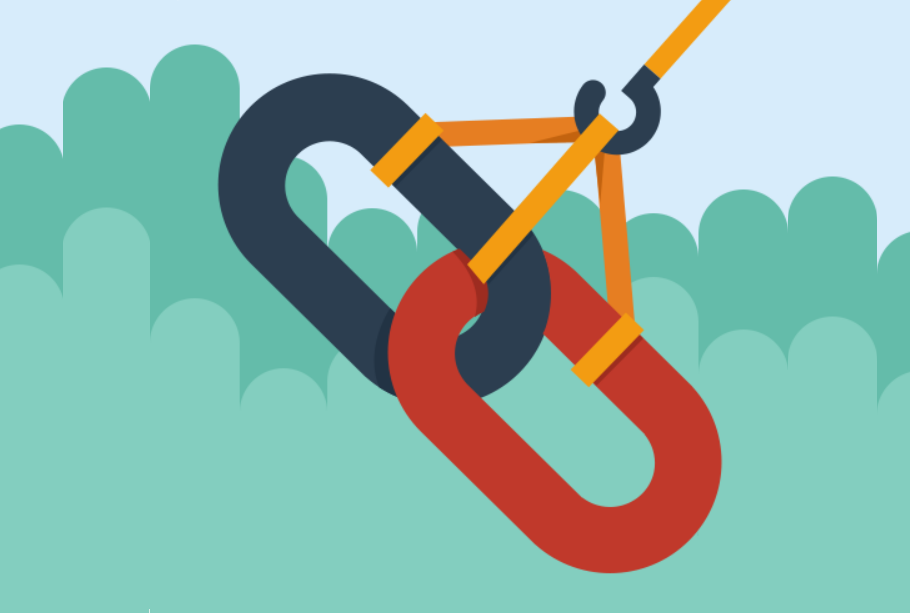
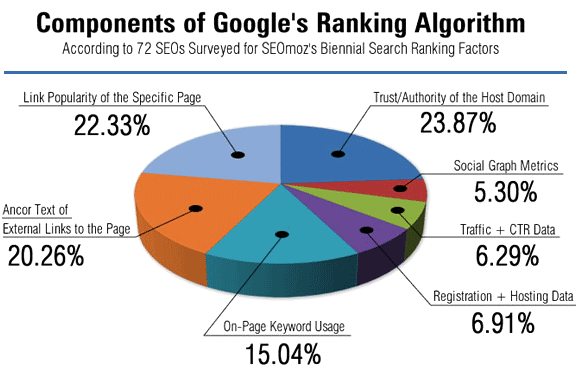


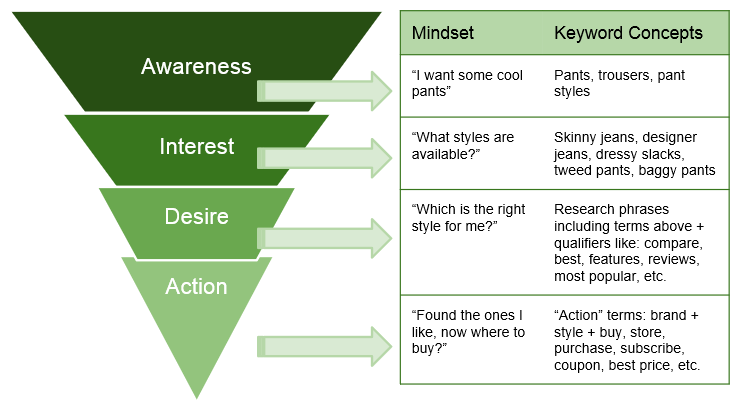





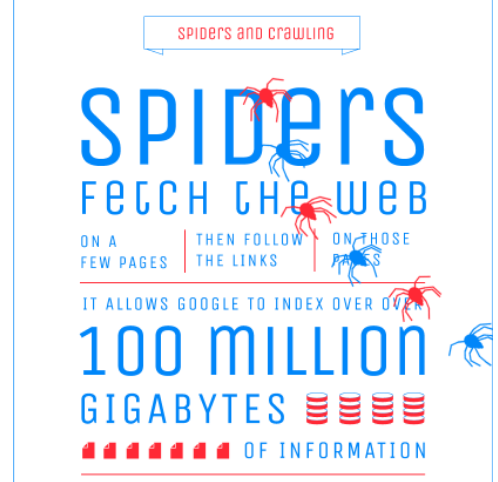







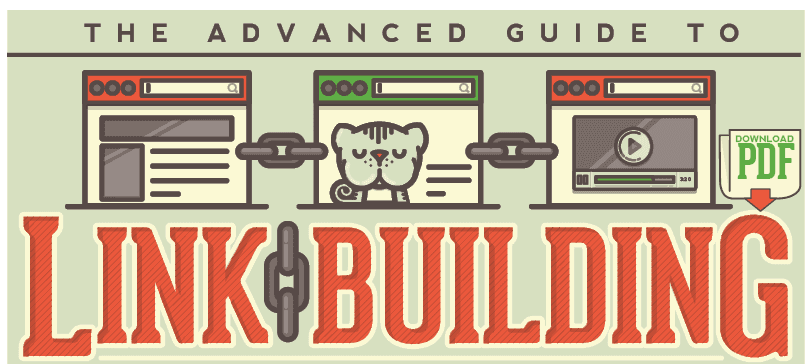

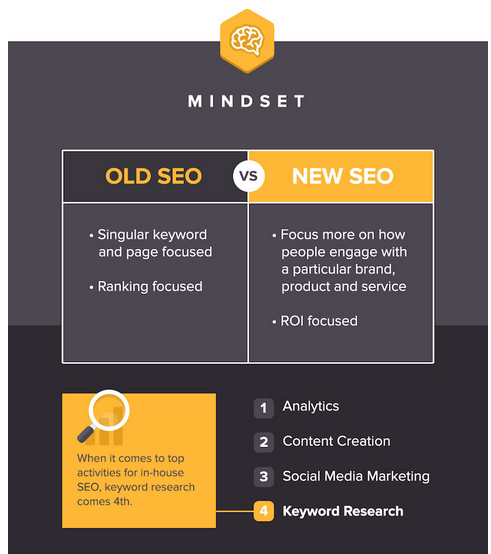






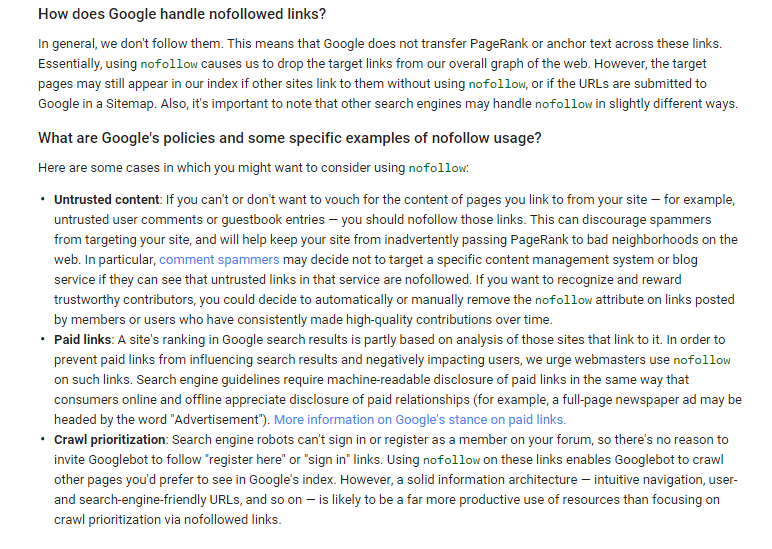



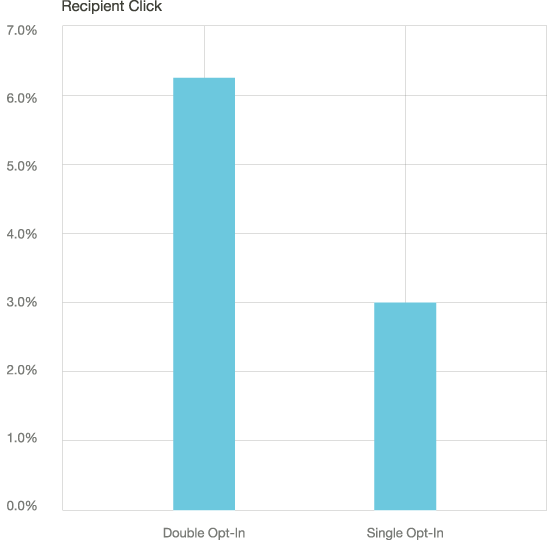









Comments (132)